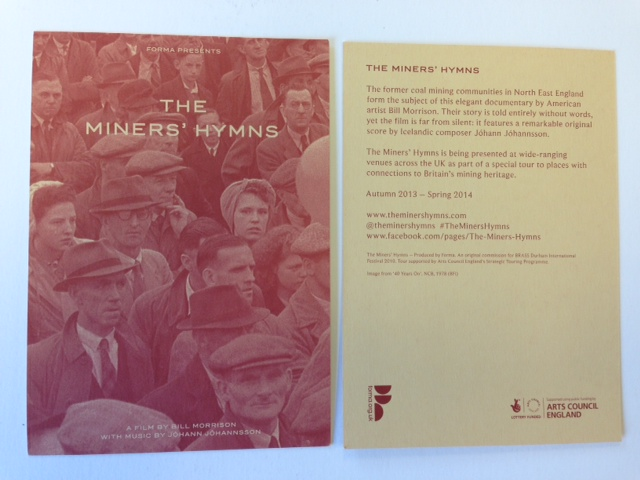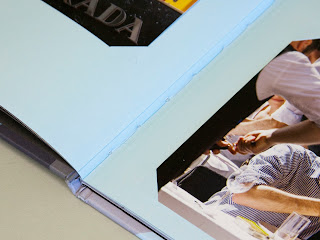Regular followers of this blog will know that in the middle of the month, I publish a "What is ....? post. The article covers various aspects of paper, printing and finishing in greater depth. However, many of these subjects are complex, so these posts are only intended to be a brief introduction to the topic.
What is ...Thermography?
 Thermography is a print process, also known as thermographic printing. The finished result being a raised image or type produced by the use of heat with a slight 'orange peel' effect.
Thermography is a print process, also known as thermographic printing. The finished result being a raised image or type produced by the use of heat with a slight 'orange peel' effect. These days, thermography is based on an offset litho printing process. The image/type area is printed offset litho with a special slow-drying litho ink (it doesn't contain dryers or hardeners so that it remains wet). The sheets are then loaded onto the thermography machines which are usually constructed with three sections connected by a conveyor belt - worth pointing out that it's a continuous process.
The sheet is dusted (while wet) with a fine powdered thermo-polymer followed by a gentle vacuuming to remove the excess powder from the non-imaged and dry ink areas.
The printed and dusted sheet is then carried via a conveyor through a radiant oven system and exposed to temperatures up to 700 degrees Celsius! The conveyor goes through the oven in 2 to 3 seconds during which the powder starts filming at the edges, (in effect bubbling and raising up the powdered areas). It is then fed into a convection cooling section where the polymer becomes 'fixed' (solid/hard)
This process has traditionally been used for letterheads and stationery. Researching this article, I even found out that the menus (1st class) on the Titanic had been thermographed! In those days the ink was applied by letterpress and the powder applied by hand before being placed through the heat tunnel. As I understand it "craft" Letterpress printers still produce thermography manually.
There are different grades (particle sizes) of powder which are suitable for different applications - solid areas to fine type. There are a range of colours and now, also a range of metallic and transparent thermo powders - you can even encapsulate glitter in the transparent ink, so the process is incredibly versatile.
Thermography became popular in the "glossy" 1970's although it was often regarded as just being a cheaper alternative to "engraving/die-stamping". In the 1980's with the advent of laser printers, thermo letterheads became problematical because the inks caused a problem with being re-heated. Since then, the powder manufacturers, Caslon, have developed a laser printer, resistant powder.
Thermography is not a particularly widely used process in commercial printing, although it is a very popular effect used for greeting cards and in some social stationery.
 Back in the early 1990's (early in my career in paper!) I used to deal with an US paper mill called French Paper based in Niles, Michigan. Back in those far off days, they employed a design agency called Duffy based in Minneapolis, to create their promotional swatches and the designer was Charles S. Anderson. The imaginative and creative use of thermography on the literature is one thing that particularly impressed me. Unlike when I had seen thermo used in the UK, this was used in a much more random way, complimenting the litho printing. Hopefully these pictures will give you an idea of what I mean.
Back in the early 1990's (early in my career in paper!) I used to deal with an US paper mill called French Paper based in Niles, Michigan. Back in those far off days, they employed a design agency called Duffy based in Minneapolis, to create their promotional swatches and the designer was Charles S. Anderson. The imaginative and creative use of thermography on the literature is one thing that particularly impressed me. Unlike when I had seen thermo used in the UK, this was used in a much more random way, complimenting the litho printing. Hopefully these pictures will give you an idea of what I mean.
I hope this has explained enough about the process. There are a few specialist thermo printers in the UK and a few general printers with thermo equipment. I am particularly grateful to Brian Frost and Darren Crowe at Abbot Print in Sussex for their guidance and help for this article.
Posted by Justin Hobson 14.02.2014


















































